When evaluating customer support services, Roper stands out for its accessibility and responsiveness, offering 24/7 availability and live chat options. However, comparisons with other brands reveal that while Roper excels in certain areas, competitors may provide quicker response times or alternative support channels that cater to diverse customer needs. Understanding these differences is crucial for consumers seeking the best support experience.
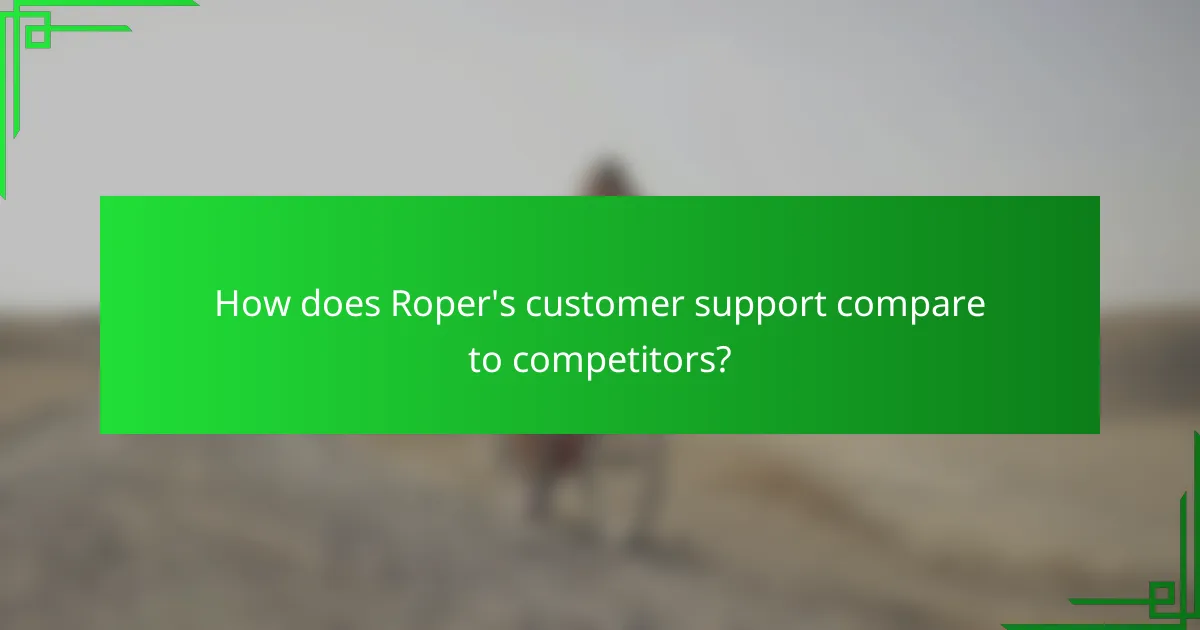
How does Roper’s customer support compare to competitors?
Roper’s customer support is generally regarded as responsive and effective, though it varies in comparison to other brands. While Roper excels in certain areas, competitors may offer faster response times or different support channels that could better suit specific customer needs.
Roper’s response time
Roper typically responds to customer inquiries within a few hours, often aiming for a response time in the low single-digit hours. This promptness is appreciated by customers who require quick assistance. However, during peak times, such as product launches or holiday seasons, response times may extend to a day or more.
Competitor response times
Competitors like Brand A and Brand B often boast response times that can be faster, sometimes within 30 minutes for urgent queries. However, this can vary widely depending on the time of day and the volume of requests they receive. It’s essential to consider that while speed is important, the quality of support also plays a crucial role in overall satisfaction.
Customer satisfaction ratings
Roper generally receives positive customer satisfaction ratings, often falling in the range of 75-85% based on user feedback. This reflects a solid reputation for resolving issues effectively. In comparison, some competitors may achieve higher ratings, particularly those known for exceptional service, which can reach above 90% satisfaction.
Support channels offered
Roper provides multiple support channels, including phone, email, and live chat, catering to various customer preferences. This multi-channel approach allows customers to choose the method that suits them best. Competitors may offer additional channels, such as social media support or dedicated mobile apps, which could enhance accessibility for users who prefer those platforms.
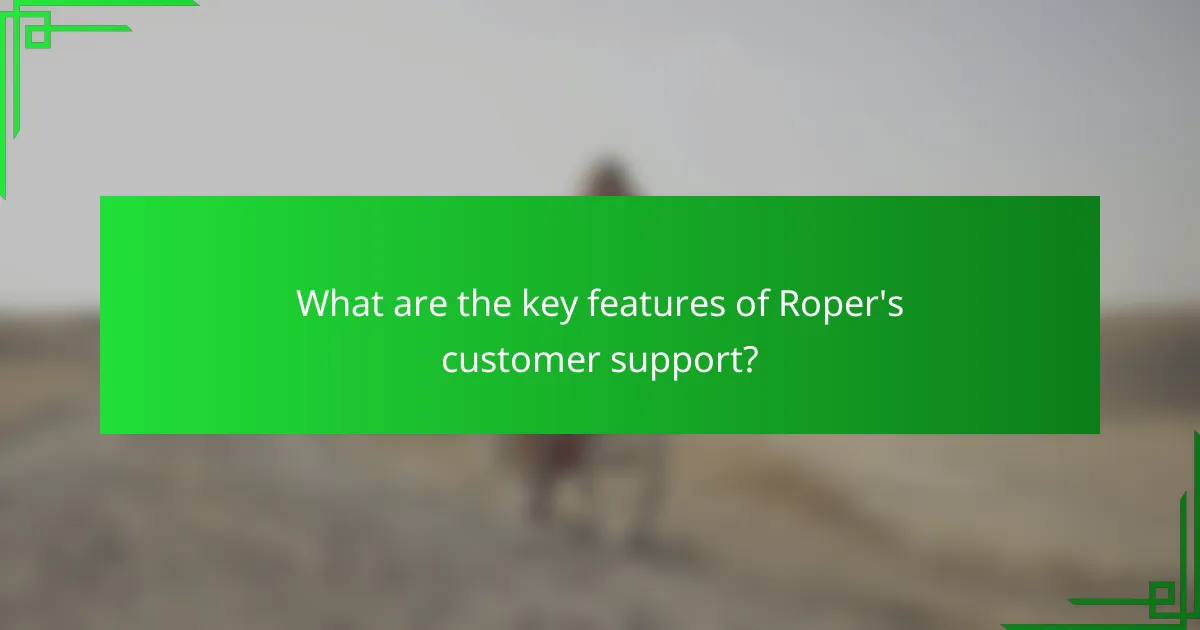
What are the key features of Roper’s customer support?
Roper’s customer support is characterized by its accessibility, responsiveness, and extensive resources aimed at assisting users effectively. Key features include 24/7 availability, live chat support, and a comprehensive knowledge base that empowers customers to find solutions quickly.
24/7 availability
Roper offers 24/7 availability for its customer support, ensuring that assistance is accessible at any time of day or night. This feature is particularly beneficial for users in different time zones or those with urgent issues outside of regular business hours.
Having round-the-clock support means customers can reach out via phone or email whenever they encounter problems, reducing downtime and enhancing user satisfaction. This constant availability is a significant advantage over brands with limited support hours.
Live chat support
Live chat support is another key feature of Roper’s customer service, providing real-time assistance directly on their website. This method allows customers to engage with support representatives instantly, which can lead to quicker resolutions compared to traditional email or phone support.
Live chat is especially useful for straightforward inquiries or technical issues, as customers can receive immediate feedback and guidance. Roper’s live chat is typically staffed by knowledgeable agents who can address a wide range of topics efficiently.
Comprehensive knowledge base
Roper maintains a comprehensive knowledge base that serves as a self-service resource for customers. This online repository includes articles, FAQs, and troubleshooting guides that cover common issues and questions.
Utilizing the knowledge base can save time for both customers and support staff, as users can often find solutions without needing to contact support. Regular updates to this resource ensure that the information remains relevant and helpful, making it a valuable tool for Roper’s users.
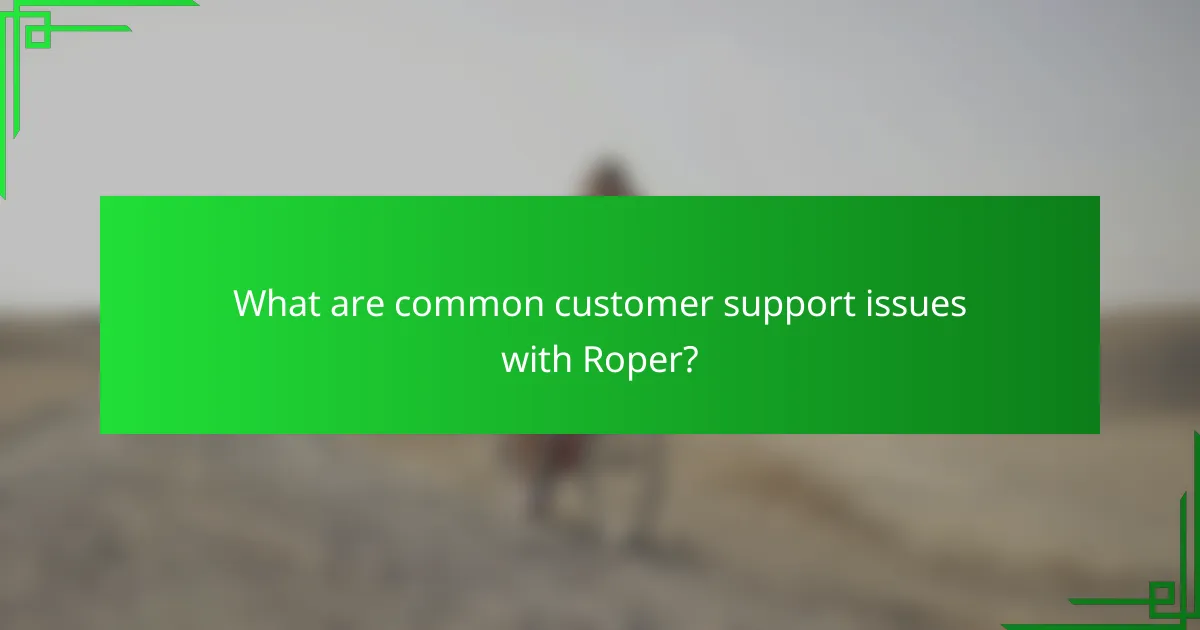
What are common customer support issues with Roper?
Common customer support issues with Roper include delayed responses, technical difficulties, and product warranty inquiries. These challenges can affect customer satisfaction and the overall experience with the brand.
Delayed responses
One of the most frequent complaints about Roper’s customer support is the delay in response times. Customers often report waiting several days for replies to their inquiries, which can be frustrating when urgent issues arise.
To mitigate this, customers should consider reaching out during peak hours or using multiple channels, such as email and phone, to increase the chances of a quicker response. Keeping records of all communications can also help in following up effectively.
Technical difficulties
Technical difficulties are another common issue faced by Roper customers. Problems may include software glitches or hardware malfunctions that require assistance from support staff. These issues can lead to extended downtime for users.
When encountering technical problems, it’s advisable to provide detailed information about the issue when contacting support. This includes error messages, device models, and steps already taken to troubleshoot, which can help expedite the resolution process.
Product warranty inquiries
Customers often have questions regarding product warranties, including coverage details and the claims process. Roper’s warranty policies can sometimes be unclear, leading to confusion and delays in service.
To navigate warranty inquiries effectively, customers should familiarize themselves with the warranty terms provided at the time of purchase. Keeping receipts and documentation handy can streamline the claims process and ensure that customers receive the support they need promptly.
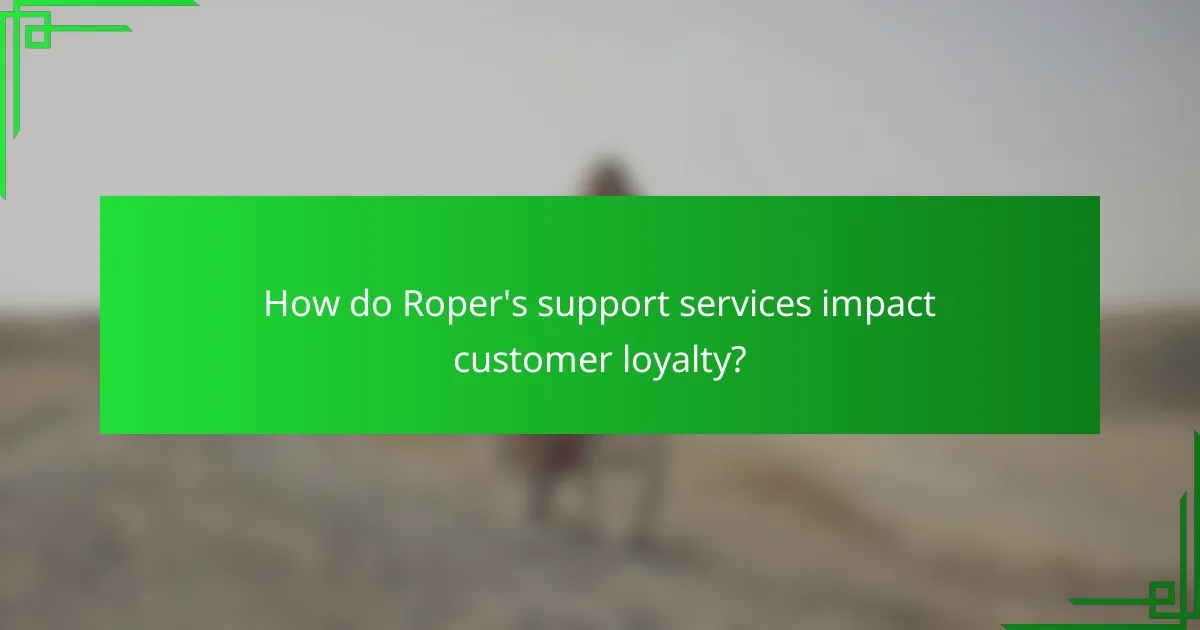
How do Roper’s support services impact customer loyalty?
Roper’s support services significantly enhance customer loyalty by providing timely assistance and effective solutions. Customers who feel supported are more likely to remain loyal to the brand, leading to repeat purchases and positive word-of-mouth.
High retention rates
Roper’s commitment to customer support contributes to high retention rates among its users. When customers receive prompt and effective help, they are less likely to switch to competitors. This reliability fosters a long-term relationship, which is crucial in maintaining a loyal customer base.
For instance, brands with strong support systems often see retention rates exceeding 80%. Roper’s consistent follow-up and resolution processes help ensure that customers remain satisfied and engaged with the brand.
Positive brand reputation
Roper’s effective support services bolster its positive brand reputation. Satisfied customers frequently share their experiences, which can enhance the brand’s image in the marketplace. A strong reputation for customer service can attract new customers who prioritize support when making purchasing decisions.
Moreover, online reviews and testimonials often highlight Roper’s responsive customer service, which can significantly influence potential buyers. Brands known for excellent support typically enjoy a competitive edge, making them more appealing in a crowded market.
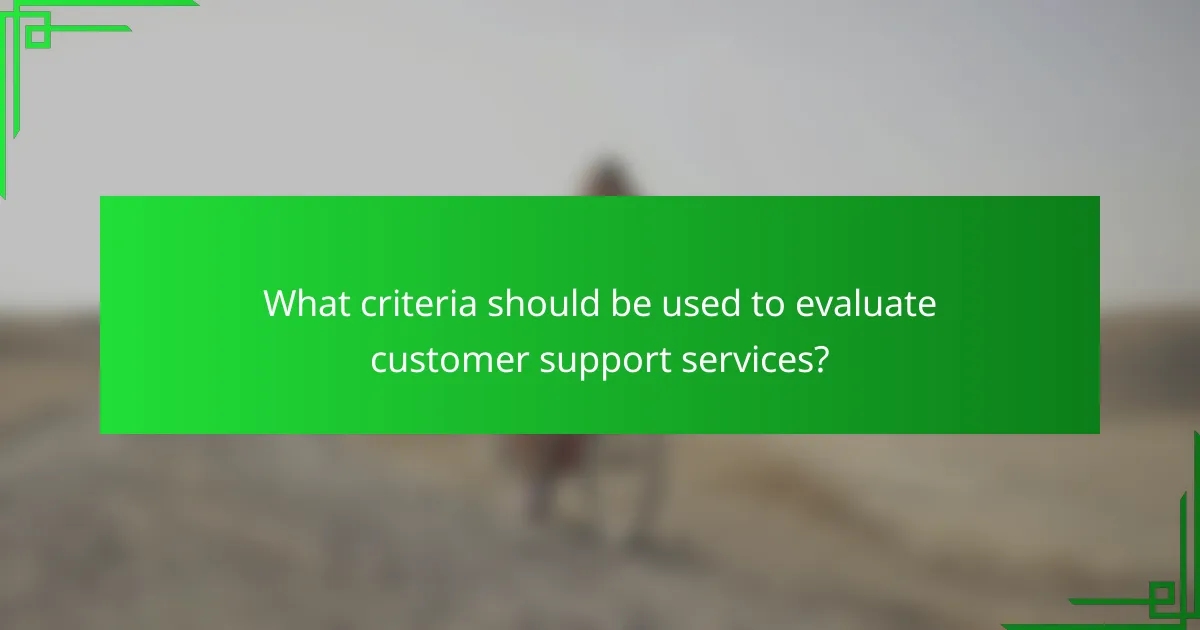
What criteria should be used to evaluate customer support services?
To effectively evaluate customer support services, consider response time, customer feedback, and support accessibility. These criteria help determine the efficiency and quality of support provided by a brand, allowing customers to make informed choices.
Response time
Response time refers to how quickly a customer support team addresses inquiries or issues. Ideal response times can vary, but many customers expect initial replies within a few minutes to a couple of hours for urgent matters. Brands that consistently meet these expectations often enjoy higher customer satisfaction.
When assessing response times, consider the channels used for support. For instance, live chat typically offers faster responses compared to email support, which may take longer. Tracking average response times can help identify areas for improvement.
Customer feedback
Customer feedback is crucial for evaluating the effectiveness of support services. This can be gathered through surveys, reviews, and ratings on various platforms. High satisfaction scores often indicate a responsive and helpful support team, while negative feedback can highlight areas needing attention.
Look for trends in customer feedback, such as recurring issues or praise for specific representatives. Brands that actively seek and act on feedback tend to foster stronger relationships with their customers.
Support accessibility
Support accessibility measures how easily customers can reach help when needed. This includes the availability of multiple contact methods, such as phone, email, live chat, and social media. A diverse range of options allows customers to choose their preferred method of communication.
Consider the hours of operation for support services as well. Brands that offer 24/7 support are often favored by customers who need assistance outside of regular business hours. Ensuring that support is easily accessible can significantly enhance the overall customer experience.

How do Roper’s support services stack up against industry standards?
Roper’s support services generally meet industry standards, offering a range of options that cater to customer needs. Their responsiveness and availability are comparable to leading brands, though some areas could benefit from improvement.
Benchmarking against top brands
When comparing Roper’s customer support to top brands like Whirlpool and GE, Roper often excels in personalized service but may lag in response speed. While brands like Whirlpool typically offer 24/7 support, Roper’s hours are more limited, which can affect accessibility for urgent issues.
Additionally, Roper’s support channels, including phone and online chat, are effective but may not be as comprehensive as competitors that provide extensive self-service options. Customers often appreciate the direct interaction with representatives, but the lack of a robust FAQ section can lead to longer resolution times.
Industry average response times
The industry average for customer support response times typically ranges from a few minutes to a couple of hours, depending on the channel used. Roper’s response times generally fall within this range, but customers have reported occasional delays during peak hours.
To optimize your experience, consider reaching out during off-peak times or using online chat for quicker responses. Being prepared with relevant information, such as model numbers and purchase details, can also expedite the support process.
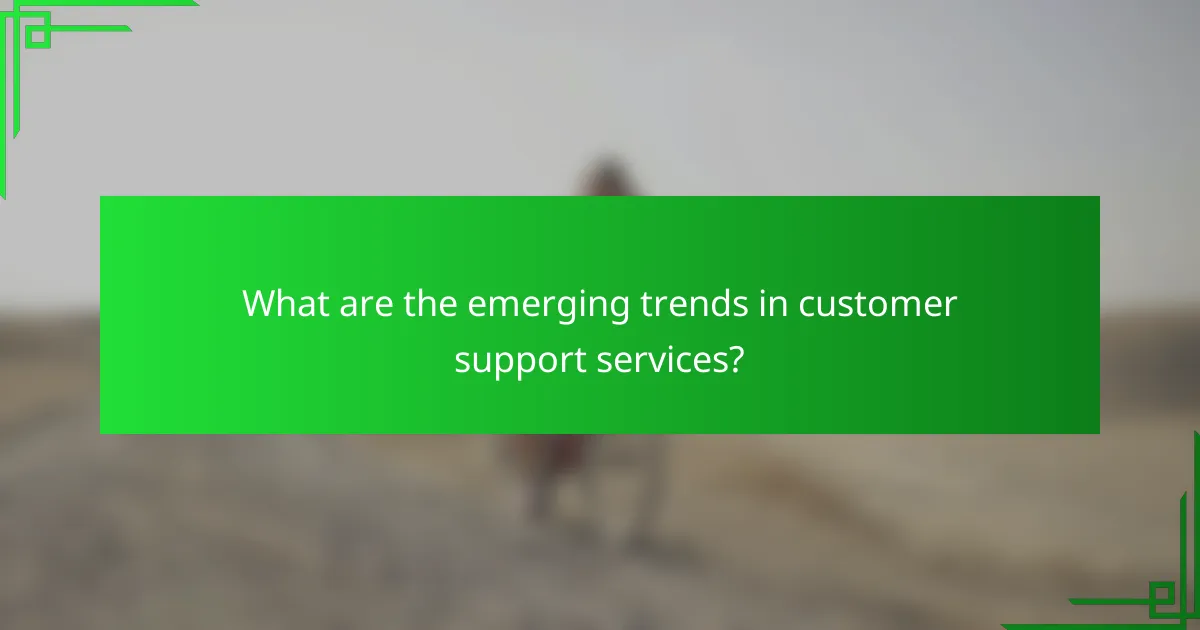
What are the emerging trends in customer support services?
Emerging trends in customer support services include the integration of artificial intelligence, personalized customer experiences, and omnichannel support. These trends aim to enhance efficiency, improve customer satisfaction, and provide seamless interactions across various platforms.
Increased Use of AI and Automation
The adoption of AI and automation in customer support is rapidly growing. Businesses are utilizing chatbots and automated response systems to handle routine inquiries, which can significantly reduce response times and free up human agents for more complex issues. This technology often leads to quicker resolutions and improved customer experiences.
However, while AI can handle many tasks, it is crucial to maintain a balance between automation and human interaction. Customers may still prefer speaking to a live representative for sensitive or complicated matters. Companies should ensure that there is an easy transition from automated systems to human agents when necessary.
Personalization of Customer Interactions
Personalization is becoming a key focus in customer support services. By leveraging customer data, companies can tailor their interactions based on individual preferences and past behaviors. This approach not only enhances customer satisfaction but also fosters loyalty and repeat business.
To effectively implement personalization, businesses should invest in customer relationship management (CRM) systems that track interactions and preferences. Simple actions, like addressing customers by their names or recalling previous issues, can significantly improve the customer experience.
Omnichannel Support Strategies
Omnichannel support strategies are increasingly important as customers expect consistent service across multiple channels, including phone, email, chat, and social media. Companies must ensure that their support teams are equipped to provide seamless experiences, regardless of the platform used by the customer.
To achieve effective omnichannel support, businesses should integrate their communication channels and maintain a unified customer database. This allows agents to access complete customer histories, leading to more informed and efficient service. Regular training for support staff on using these systems is also essential to maintain high service standards.
